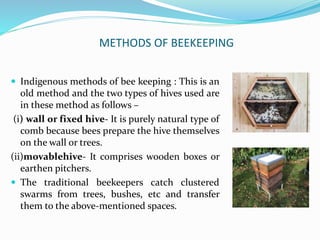This presentation provides an overview of beekeeping (apiculture). It discusses the history and classification of honey bees, the main species of honey bees and the honey they produce. It describes traditional and modern methods of beekeeping, including hive components. The key products of beekeeping are honey, beeswax, royal jelly, bee venom, and propolis. Finally, it outlines some common pests and diseases that affect honeybees.





















